| Columns Retired Columns & Blogs |
Well, the jitter spectrum of the QB-9 Twenty looks good at least. I really should get my QB-9 DSD upgraded.
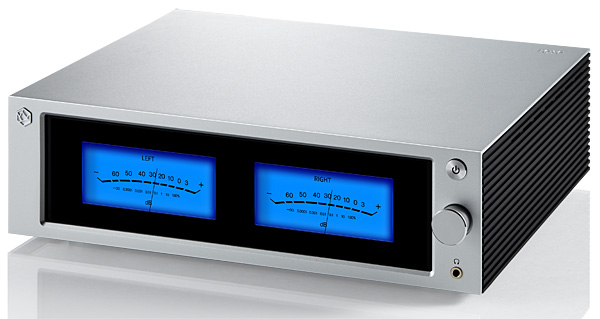
Listening
For my first listening session, I selected the HiFi Rose RS250's network connection as Roon's active Audio Zone and played files from the internal hard drive I had fitted to my Roon Nucleus+ server. I wasn't sure what to expect. Had the efforts of the HiFi Rose design team been focused on versatility and functionality rather than sound quality? The RS250's diminutive chassis contained a powerful computer and what appears to be a hefty power transformer close to the signal circuitry; won't the analog output be contaminated with noise? Finally, my system has been based on balanced analog connections for many years; would substituting the RS250's single-ended analog outputs compromise the sound?
I started my auditioning with an album I know intimately, having engineered and mixed it at the end of the 1990s for release as a Stereophile CD: Jerome Harris's Rendezvous (16/44.1 ALAC files, STPH013-2, footnote 3)). Electric bass player Harris had assembled an all-star band for the sessions at Chad Kassem's Blue Heaven Studios: Art Baron on trombone, Marty Erlich on alto sax, Steve Nelson on vibes, and Billy Drummond on drums. Listening to "Cool Pursuit" played back from the USB stick, the RS250's soundstaging accurately preserved what I had intended in the mix. Harris's Taylor bass guitar was dead center, Erlich's saxophone was positioned far right, Baron's trombone slightly right of center, Nelson's vibes, which I had miked in stereo, were spread across the left of the stage. Drummond's kit was placed slightly behind the other players, his drums illuminating the studio's churchlike acoustic. The kickdrum sounded a little tubbier than I was used to, and the bass guitar had a touch of extra upper-bass bloom.
This was with the RS250 set to the original sample rate. Upsampling to 176.4kHz took away some of the attack on the sound of the vibe, which I liked, but it also flattened the soundstage a little, moving the cymbals closer. This was not what I was expecting from my experience with other upsamplers.
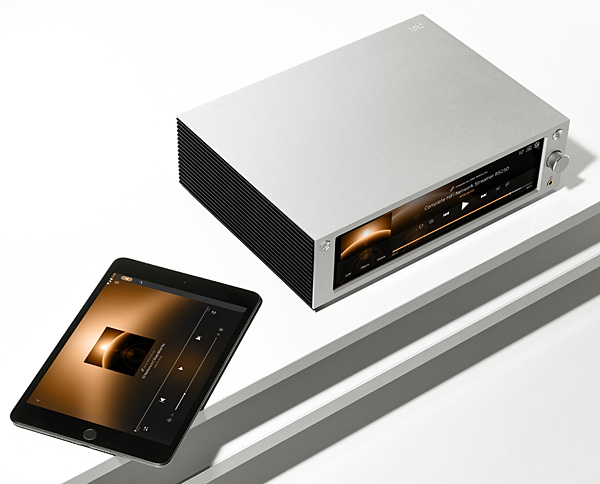
I stuck with the RS250's CMPFR filter and turned to music that had been recorded more recently. During the time the HiFi Rose resided in my system, I was producing recording sessions at Oktaven Studios in New York's Westchester County for an album of classical works, including a piano concerto and a symphony that Sasha Matson had composed for a jazz big band. The engineer was the multi-talented Ryan Streber. Each day, after returning from the studio, I used the HiFi Rose to audition the various takes Ryan had recorded for each of the pieces so that I could let Sasha know which ones I preferred. The RS250's transparency was an invaluable help in this task, allowing me to both confirm the problems I had noted at the session and identify the passages that worked best.
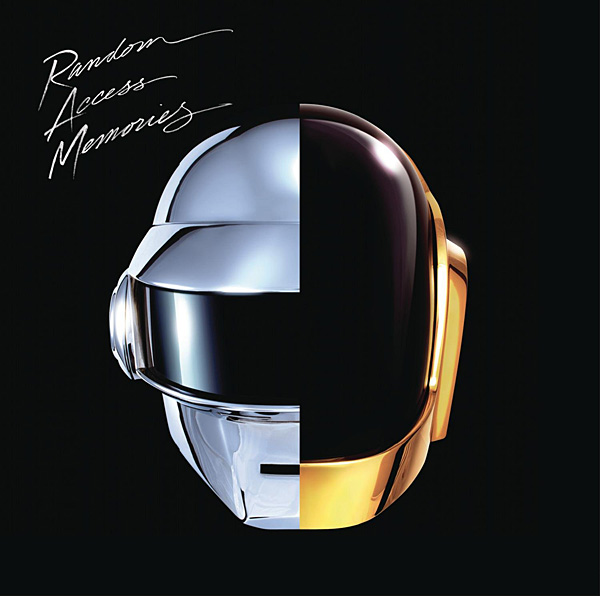
For light relief after heavy musical lifting, I played some Daft Punk, specifically "Lose Yourself to Dance" from Random Access Memories (24/88.2 ALAC, Columbia/HDtracks), followed by "Oxytocin" from Billie Eilish's new album Happier Than Ever (24/44.1 FLAC, Qobuz/Darkroom-Interscope), which I wanted to hear after reading Michael Fremer's and Malachi Lui's review on our AnalogPlanet website. Both tracks feature some heavy bass—Nathan East's bass guitar on "Dance" and (presumably) Finneas's synth on "Oxytocin." Playback levels were around 91dB (C-weighted) with slow ballistics; even with the GoldenEar BRX standmounts I was using by this time, the floorstanding Synchrony T600s with which I had started my auditioning of the HiFi Rose having been returned to PSB, the RS250's low frequencies drove the music along powerfully—though Daft Punk could teach Finneas a thing or two about preserving dynamic range in a mix.
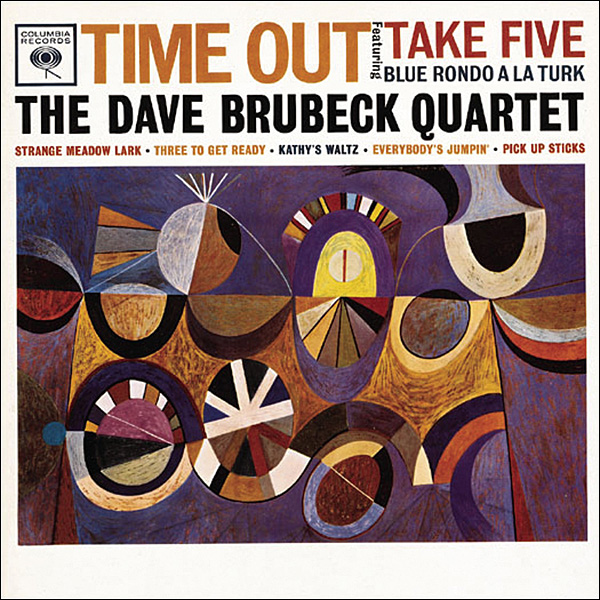
How did the RS250 handle DSD files? I cued up the Dave Brubeck Quartet's "Take Five" from Time Out (DSD64 file, Columbia/Analogue Productions) in Roon. The album's cover appeared on the RS250's display, along with the information that the file was "DSD 1 bit 2822.4Khz [sic] 2ch." Joe Morello's kick and snare drum appropriately lit up the studio's acoustic, and his cymbals had plenty of top-octave air. The soundstage was shallower than what I hear with the considerably more expensive MBL N31, however, but the sound of Paul Desmond's alto saxophone had a touch more bite.
A couple of weeks into my time with the RS250, I started to experience some stuttering with network playback with Roon. While I rebooted my router (footnote 4), I activated the USB-connected RS250 as Roon's endpoint. Hmmm. The sound with the USB input did not sound as fleshed-out as with the network connection or with files played back from the USB stick. Could this have been because only one reconstruction filter is available with this input: the "Minimum phase Fast Roll-off"? (See the "Measurements" sidebar.) Had I become used to the sound of the "Corrected minimum phase Fast Roll-off" filter?
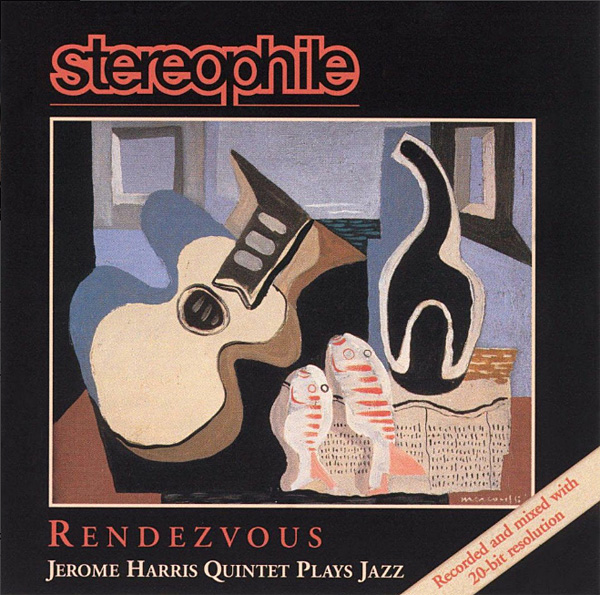
I returned to the Jerome Harris track, this time streamed by Roon over my network. After switching off resampling and listening with the CMPFR filter, I switched to the MPFR filter. There was a tad more attack to the sounds of the vibes and bass guitar, but the difference between the filters was smaller than I had experienced between the same track sent by Roon to the RS250's USB and network inputs. Not by much, I admit, but enough that I preferred the network connection.
I then tried the "Apodizing Fast Roll-off" and "Minimum phase Slow Roll-off" filters, but in the end I returned to the CMPFR filter as my first choice for the ease to its sound.
Headphone listening
Plugging a pair of headphones into the front-panel jack mutes the analog outputs and activates the volume control if the RS250 had previously been set to one of the fixed output levels. There wasn't quite enough output voltage to drive the low-sensitivity Sennheiser HD-650 headphones to satisfying levels, even with the RS250's volume control set to its maximum of 99. However, there was enough current to successfully drive the low-impedance Audeze LCD-X and AudioQuest NightHawk headphones with the volume control set to 83 or so.
I cued up the Ginger Baker Trio's arrangement of Thelonious Monk's "Straight No Chaser" from the beautifully recorded 1994 album Going Back Home (16/44.1 Atlantic 82652-2), produced by erstwhile Stereophile writer Chip Stern. Baker's drums had excellent definition and good soundstage depth, though the kickdrum and Charlie Haden's double bass sounded a little softer than I am used to.
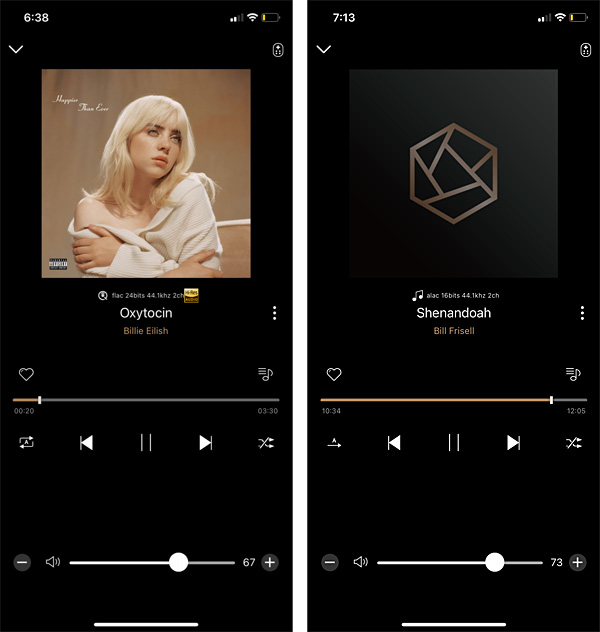
The incomparable Bill Frisell's contributions on guitar reminded me that I hadn't played his East/West album for too long a time, especially his arrangement of "Shenandoah" (16/44.1k FLAC file ripped from CD, Nonesuch) where he accompanies himself with looped guitar lines. There's a wonderful moment 2:35 in after a contemplative intro, when the drums and bass start to play and Frisell hits a power chord and turns up his guitar's volume. With the RS250-driven Audezes, this sent a chill down my spine. But the double bass still sounded a touch soft.
Over the years, I have made a number of binaural recordings, ranging from airplane shows and Formula One car races to a Grateful Dead concert at London's Rainbow Theatre in 1981. (Yes, I was a "taper"—using a pair of small omni mikes hanging in front of my ears and a battery-powered cassette recorder.) I was recording the sound of the Dead through their PA system, but they were meticulous in getting good sound. They also didn't play too loud. The various conversations and other noises from the crowd were clearly audible over the sound of the band—as they are in this recording. Indeed, at one point in "Friend of the Devil" a guy behind me clipped the recorder's input with a wild "whoo!" just as Jerry Garcia started his solo. I never could get my binaural recordings to project in front of my head. But to the sides and behind, the HiFi Rose and the LCD-Xes transported me back 30 years, depositing me in the middle of that audience.
With the LCD-Xes, overall clarity was good, though the highs seemed a tad soft. I realized that the RS250 was resampling this 16/44.1 ALAC file to 176.4kHz, the setting I had last used with loudspeakers, so I switched to the original sample rate. The highs now seemed a little clearer but were also a little too bright.
I didn't find time before the deadline to critically examine the RS250 via its analog inputs, as an all-analog preamplifier. However, I did do some informal listening and determined that the analog input gave a good-sounding result.
Watching
Audio auditioning done with, I clicked on the Connect app's RoseTube icon, which took me not only to a selection of YouTube videos but also to a search button. Narcissist that I am, I searched for videos of my own recordings and found "In Paradisum" by the Portland State Chamber Choir, a track from our June 2020 Recording of the Month (Naxos 8574124). Philip Jack's abstract images were displayed on the RS250's screen. The presentation was not quite as transparent as it had been when I played the CD with the MBL N31 and sent the bits to the RS250's TosLink input—I don't know what bitrate YouTube serves the audio with this video—but the solo cello was palpably presented, its stably positioned image surrounded by the choir's mostly wordless vocalizing.
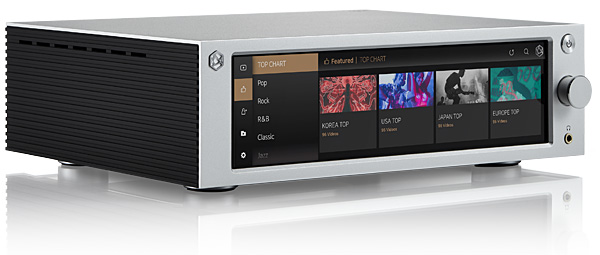
Summing up
I wasn't sure what to expect from the HiFi Rose RS250, an extraordinarily versatile, affordable product from a new company. However, the sound quality of the HiFi Rose RS250 suggests that nothing had been compromised in packing so many features into its small chassis. In addition to its obvious application as a versatile music (or multimedia) server, the RS250 can serve another function: If you own a legacy D/A processor that you love the sound of but which only has S/PDIF inputs, the RS250 can act as a network bridge. Similarly, for LP playback, you could connect your phono preamp to the RS250's analog inputs.
Highly recommended both as a streaming DAC and as an all-in-one hub for a high-end audio system.
Footnote 4: Restarting the router didn’t fix the problem, although things got better on their own the following day.

Well, the jitter spectrum of the QB-9 Twenty looks good at least. I really should get my QB-9 DSD upgraded.

Good catch!
That's probably the review of the QB-9 Twenty in its entirety. After all, the Twenty is an upgrade to a no longer manufactured product.
And, yeah, you should get the upgrade. At the risk of sounding like a shill for Ayre, the upgrade is really worth the asking price, and probably a lot more. (Which I paid in full - if I'm a shill, I'm also a very bad negotiator.)

I just upgraded the USB board in my QX-5 Twenty and WOW, I was not expecting this kind of improvement. Definitely a worthwhile upgrade. I guess we're both shills for Ayre. :-)

I can see why.
Compare Figure 16 to the comparable plot in the Stereophile review for the original QX-5 Twenty.
Of course, many, many people will tell you that this sort of thing is inaudible and that you are crazy. But, crazy people can be happy, too.

Hi
When one crazy enough to burn his/her easy money to be happy, why not ?
Life is short so make the best use of it.
Jacl L

Somewhat OT:
This seems as good a place to ask this as any.
This particular digital solution seems to perform not quite as well as some other products with regard to jitter sidebands. Is this audible? By how much? Why?
Now... Head to the bottom of this very web page and click on the button that says "hi-finews". That'll take you to a website for the magazine of the same name.
Look at a turntable review. Any turntable review.
In the Lab Report, there is a plot of what is labeled Wow and flutter. This is a spectral display of a single tone from a vinyl disc played back through the turntable under review.
Isn't that pretty much the same concept as the jitter test, at least with regard to the central tone of the J-test at 11 KHz?
So, how is one to interpret all of this? One is obviously far different than the other.
It's not obvious from either plot and associated labelling what the measurement parameters are for the spectrum analyzer. The resolution bandwidth, the video filtering, the averaging type and number of samples, the detector type, and so on are not shown for either. (To be fair, this might be explained in an article somewhere that I failed to find - my bad.) Variations there would explain a lot. But, maybe there's much more to it.
I find this all confusing. Perhaps I am the only one who does, though.
Perhaps I am overthinking all of this, too. Wouldn't be the first time.

I don't think there's much confusion here. Jitter was never all that audible as an issue. No need for audiophiles to fear this "boogeyman" in general. I posted a demo for folks to listen to years ago - just Google "Archimago Jitter Demo".
Yeah, the J-Test for a device like this is not good for modern 2021 digital especially for the 24-bit ethernet input. I still don't think it's audible in real music anyways, it's more of a reflection of the engineering that the time-domain wasn't better despite the claims of using femtoclock parts and the ESS ES9038Q2M DAC chip!
No surprise as well that turntables are comparatively inaccurate vs. digital (Google "Archimago vinyl LP fidelity" for a discussion). It's very obvious if one listens to a pure tone like 3150Hz as per HiFi News. Time-domain is poor with LP playback not just because of turntable rpm variations but also the imperfections of the vinyl itself. Again, with music we don't notice these issues as much.

Nice article. Thanks for testing storage drives (i.e. usb thumb drive, portable HDD, etc) on this device Some of us have amassed significant size CD quality or better on storage drives. From the late 90’s and before streaming had the quality we see tday. Streaming Qobuz and Tidal are impressive but some of us aren’t quite ready to pay for yet another streaming subscription. Articles like yours (and the use of Roon) help prepare us for if that plunge ever comes.

Hi
If only HD music videos are needed (what else??), I would not bother to spend my nerves & hard-earned cash on those bells & whistles loaded 'hi-tech' streamers.
Yes, YouTube provides 24/7 tons HD & 4KUHD music shows, streamable FREE by any WiFi HD & 4KUDH blue-ray players. Let's lead a simple life & enjoy really
eye-widening & ear-thrilling HD/4KUHD music shows on our 4KUHD TVs streamed free from YouRTube. Who needs to sweat fighting with those complex 'hi-teck' remotes ???
This is exactly what yours truly have been doing since a couple years back. I simply feed the digital PCM audio signals from the coaxial O/P jack of the HD Blu-ray player to my 24bit/192KHz DAC which in turn hooked up to the linestage I/P of my design/built tube phono-preamp with its PASSIVE bypass switched on. So the HD audio signals from the DAC electrically feeds direct to the power amp !
Please note any DACs deliver adequate output voltage to drive directly any power amps to their rated full output power. Or simply feed the DAC L/R analogue audio signals direct into the power amp if it comes with built-in volume controls. The sonic is sooo rewarding..
With such DIRECT signal feed to the power amp, the HD sonic quality of so many those HD/4KUHD music shows from YouTube becomes surprisingly sooo good to make my skeptical vinyl-addicted ears up-pointing !! No kidding.
Life is short so let's make it simple.
Listening is believing
Jack L

The one year warranty from a new company is a disappointment. At a minimum it should be two years. The NAD M10 and Cambridge Audio EVO 150 are covered for three years. I've had far too many expensive electronics fail within three years of ownership. HP replaced a 4K monitor that stopped working unexpectedly after two years (covered for 3) while I was out $2k when my Noble Audio IEMs failed shortly exceeding their warranty period.